"Neon Sequence" is a side-scrolling level-breaking game. The game's style and setting are very interesting. If you want to know more about this game, please read the background story introduction and gameplay analysis of "Neon Sequence" brought by "hjyx01" below. , hope it can help everyone.
The world has been eroded and corrupted by "noise". Human beings disturbed by the noise have become manic and restless, and even transformed into monsters. At the same time, people discovered that electronic music could resist this alienation and restore people's sanity. Young people with the "power of electronic music", let's embark on a journey to eliminate noise!
——From the steam store introduction of "Neon Sequence"
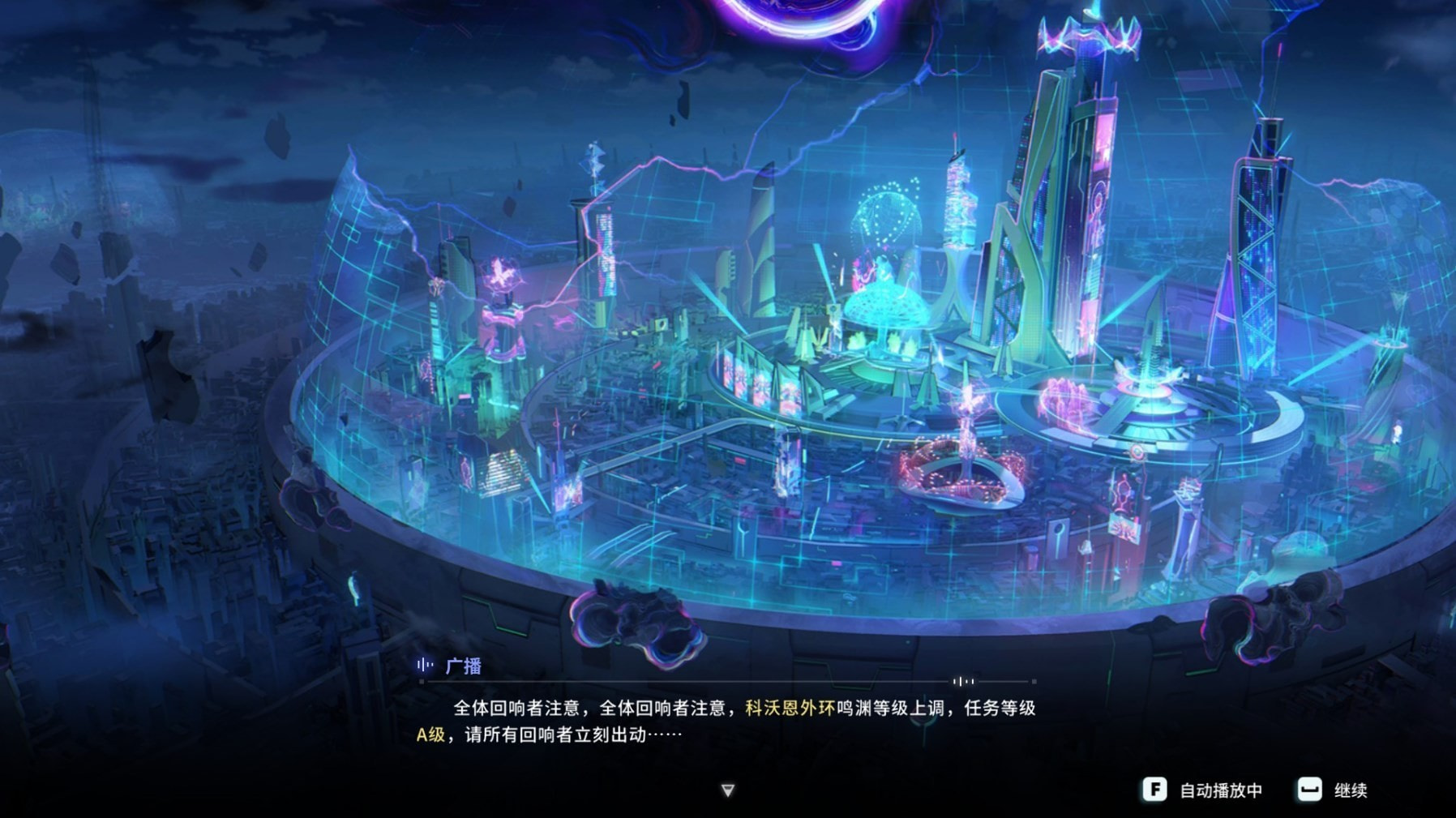
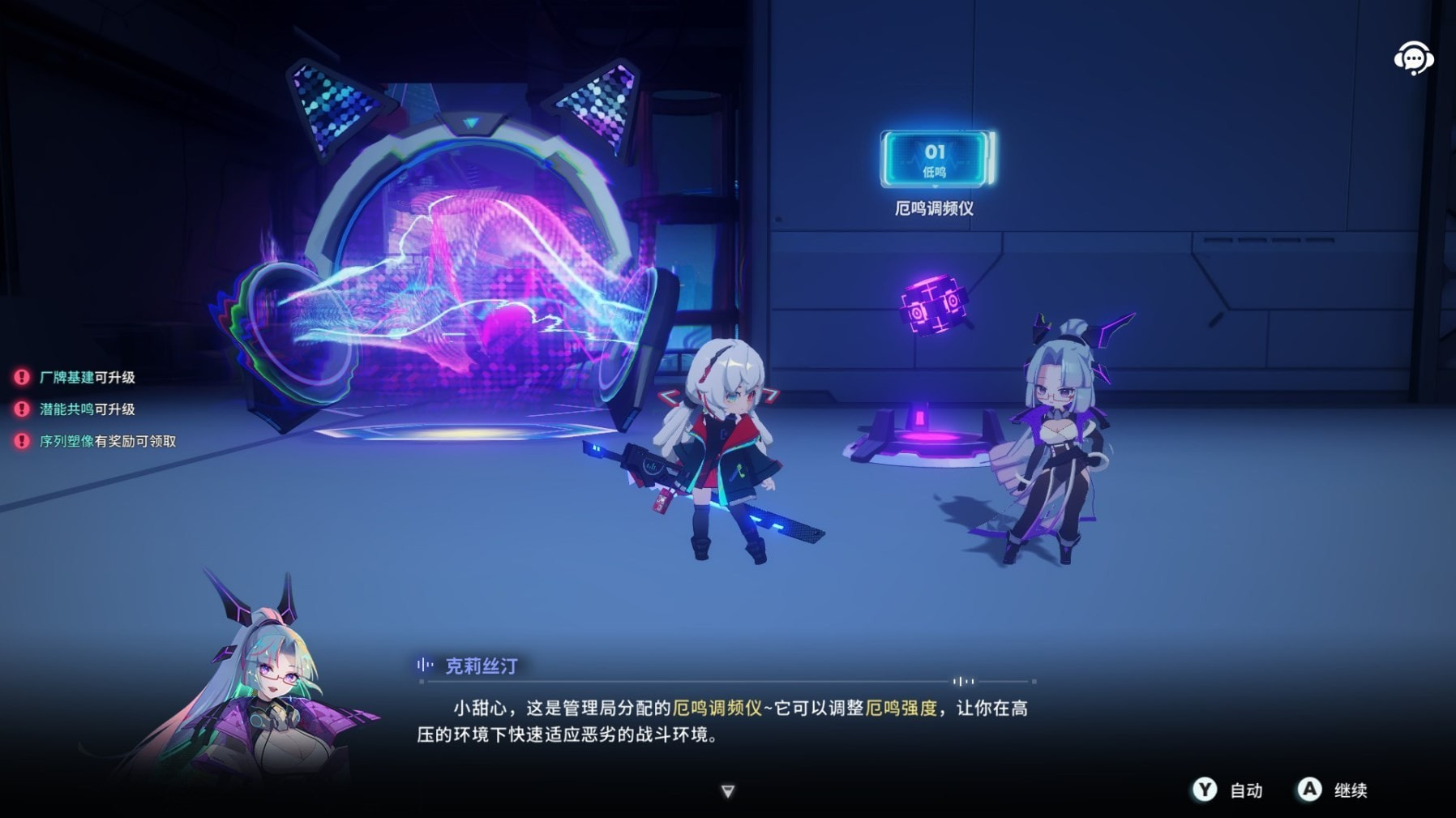
This introduction has a bit of a meaning of "defeat magic with magic" (music game version), and the overall element design of the game is quite suitable for the characteristics of music, such as the potential resonance at home, information menus, etc. Most of them adopt the disk shape design of CD ——BTW The UI of this game is pretty good, and together with the pretty good character drawings, the overall look and feel to me is pretty comfortable.
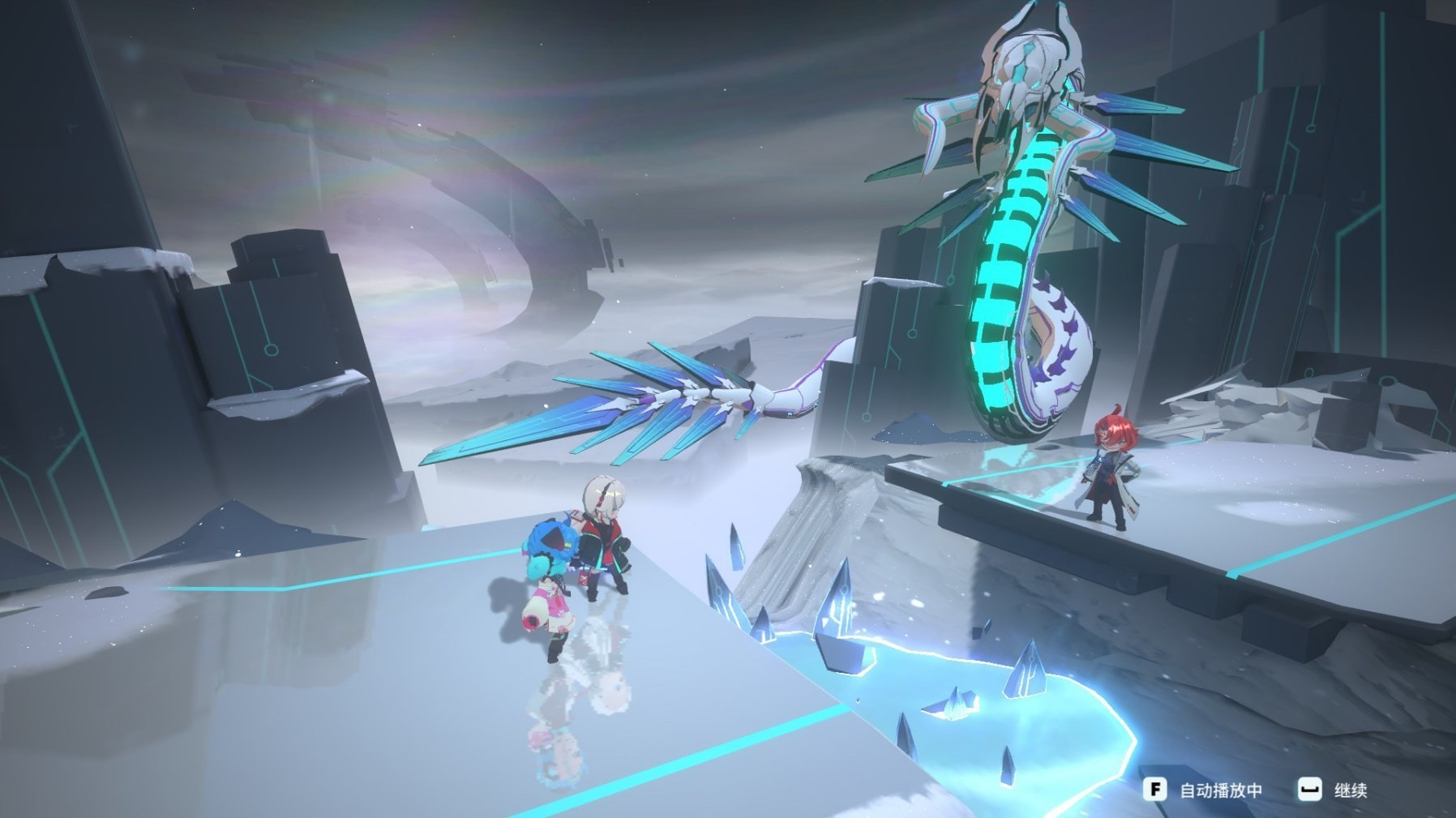
It should be said that the setting of this world view itself is quite cool, but - just the bunch of nouns made me feel emmmm, that is, I played about 10 rounds in 9 hours, and basically didn’t remember the nouns in it. From items, skills to systems, I understand very well what everything means and what its functions are, but I have no impression of the terms themselves. However, this shows that the UI icons and content guidelines are still good.

Of course, the plot still has a strong sense of socialism, such as the employees who are squeezed by the CEO (the protagonist group), and the plot is also a bit old-fashioned (we found a traitor). In addition to the design of visual elements, the audio game also The gameplay aspect is still somewhat superficial - for example, "Hi-fi Rush" has not been able to make a real ACT audio game, but only made an ACT game with a very important sense of rhythm, so "Neon Sequence" "It may be closer to a horizontal version of "Hades" than a music game.
Core features of gameplay
Before introducing the overall framework of the game, first I would like to briefly explain what the interesting aspects of this game are: perfect flash, rhythmic beats, rhythmic links and element interaction.
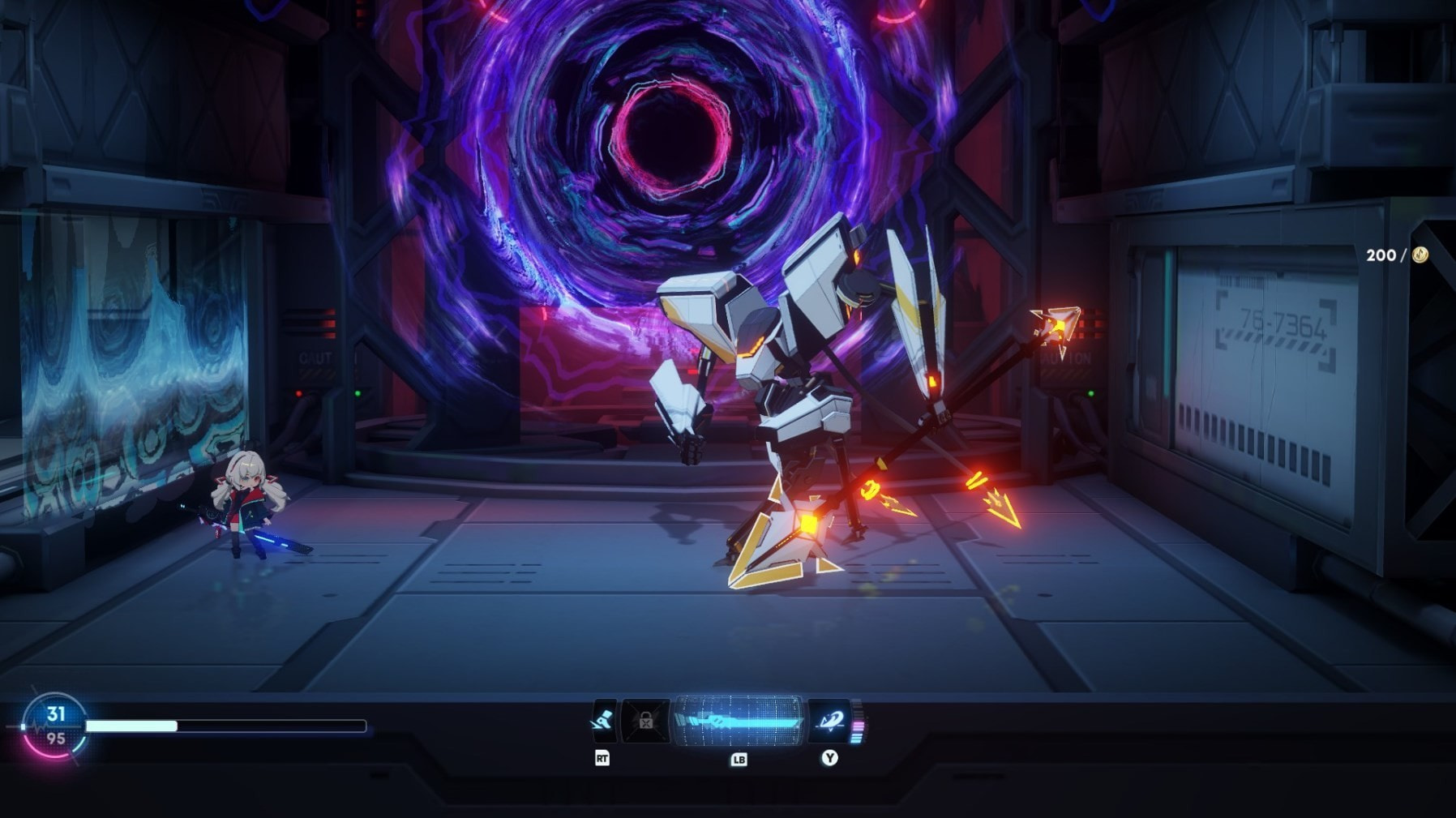
Perfect Flash means entering a "neon state" when it flashes perfectly, and an invincible frame of up to 1 second+ will appear continuously, and it will also give the enemy very powerful damage or control effects based on the characteristics of the character. Although the monster pile-up in the game is quite serious, the setting of this neon state very well solves the "turn-based" combat effect caused by the general horizontal version of the monster pile-up, allowing players to switch from offense to defense. Initiative can produce very refreshing results. Generally, "Perfect Dodge" may be set up to benefit from the expansion of the witch's time similar to that of Sister Bei, but I don't remember seeing many such settings that directly provide powerful counterattacks. Facts have proved that it is of great benefit to the refreshment rate. .
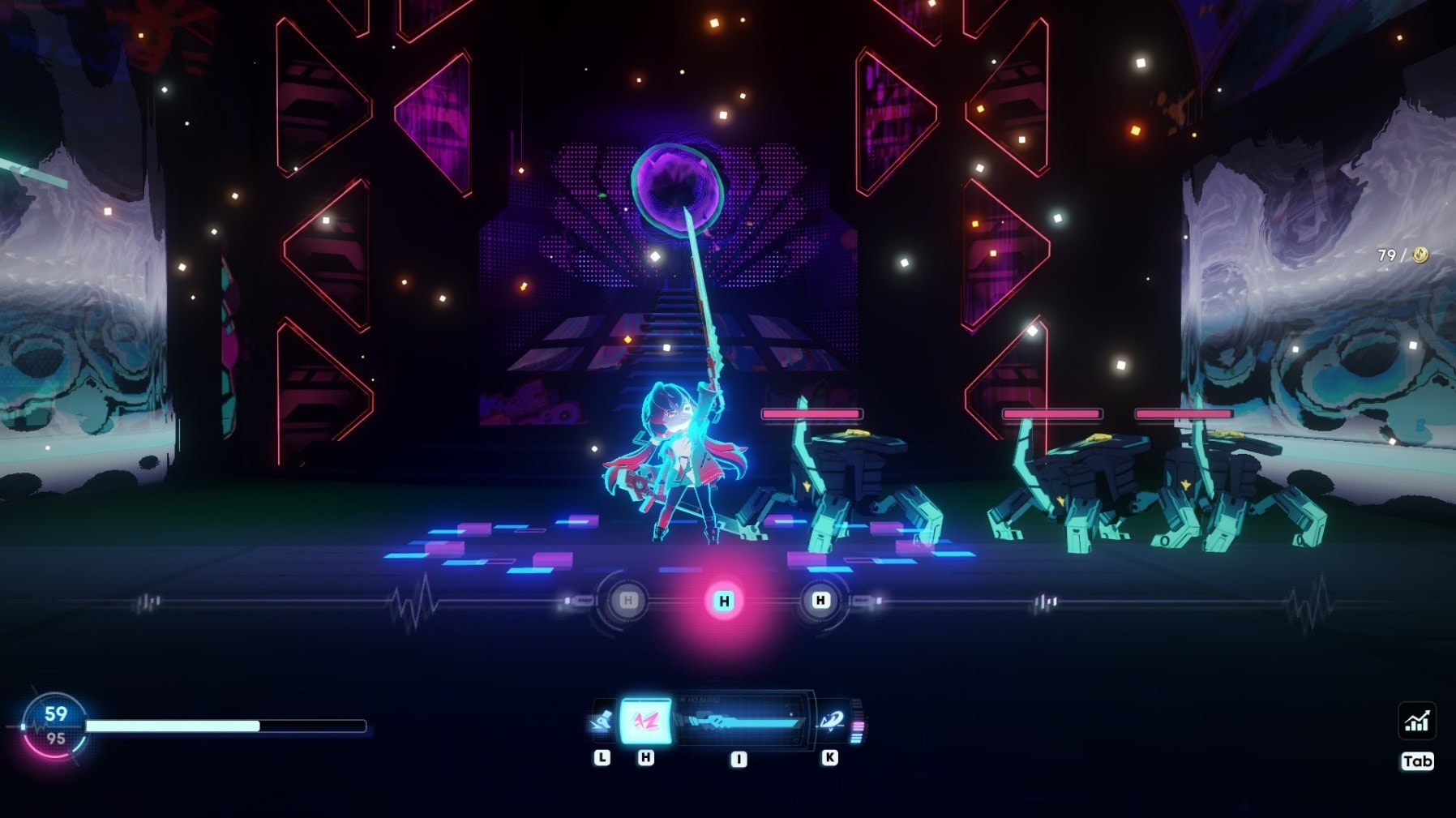

Rhythmic beat means that the skills in the game have two versions: regular version and step-by-step version, which brings a little sense of musical gameplay (although not much);
Then Rhythm Link is a passive nine-square grid - the interesting thing about it is that there are combination attributes outside the nine-square grid. In addition to the single grid attributes, you also need to consider the combined attributes, which gives this build content a certain space for fun thinking.

Finally, there is element interaction - this is actually present in "Hades", but the "double effect" is basically just one kind. In "Neon Sequence", the effect content of a single sequence is richer, and various fancy combination effects are also available. More.
Imitating "Hades", but with improvements and features
It can be seen from many aspects that "Neon Sequence" has a strong imprint of "Hades", including the cultivation of the family, the composition of the attack modules, the logic of the levels, and even the structure of the BOSS.
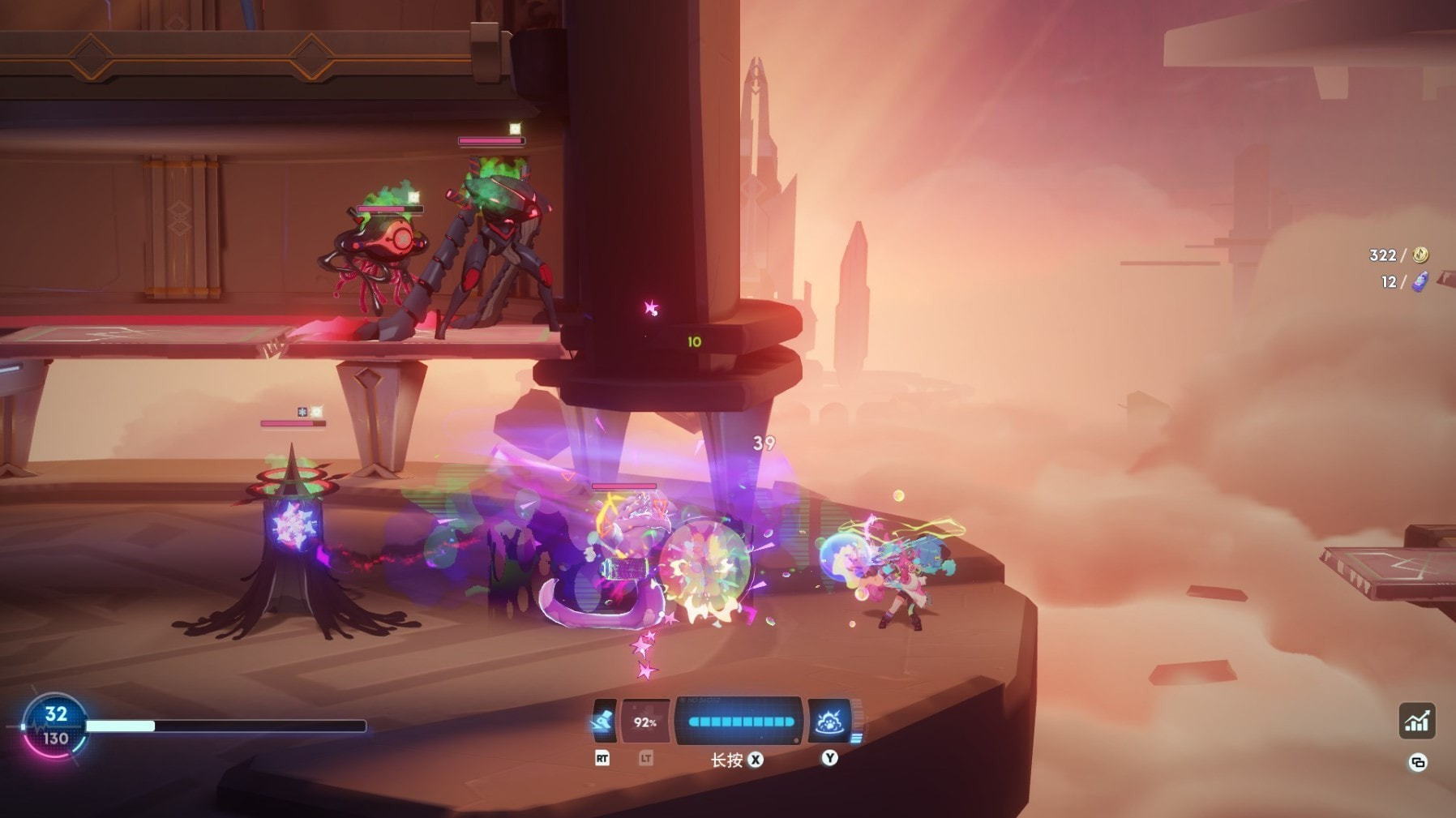
There is a lot of content in the development part, so we will focus on the next part. In terms of attack modules, the game includes basic attacks*, skills with CDs, rhythm skills and ultimate moves - a bit like the basic attacks, skills, throws and ultimate moves in "Hades". However, there are certain differences. First, as a horizontal action game, this game has jumping and floating settings;
*The game includes three characters: Tai Sword Girl, Bubble Gun Girl and Boxing Boy, which can be understood as agile warrior (flexible movement, medium-range attack), long-range mage (long range, strong control), and melee warrior (high damage and close range). physical combat).
Secondly, the production team of "Neon Sequence" still considers the characteristics and positioning of each attack type - for example, there is a stun value setting in the game. Except for the BOSS at the end of the level, all enemies, including elite monsters, will lose their actions. The ability's cumulative stun status setting.

Then it becomes a natural logic to start with the Y skill to stun the monster and then continue the attack. In terms of rhythm skills, the three characters have very obvious differences. Tai Dao can dodge infinitely for a period of time after it is turned on ( The neon state is very useful when combined with the precise dodge of this game, so it is also the initial default character), bubble gun and boxing are for continuous shooting and continuous hitting respectively.
However, the ultimate move in this game seems to be relatively separate from other systems. In addition to a wide range of full-frequency damage, the greater significance is that it has a long invincibility time to avoid damage. Lilia, the sword girl, also includes a simple QTE button.
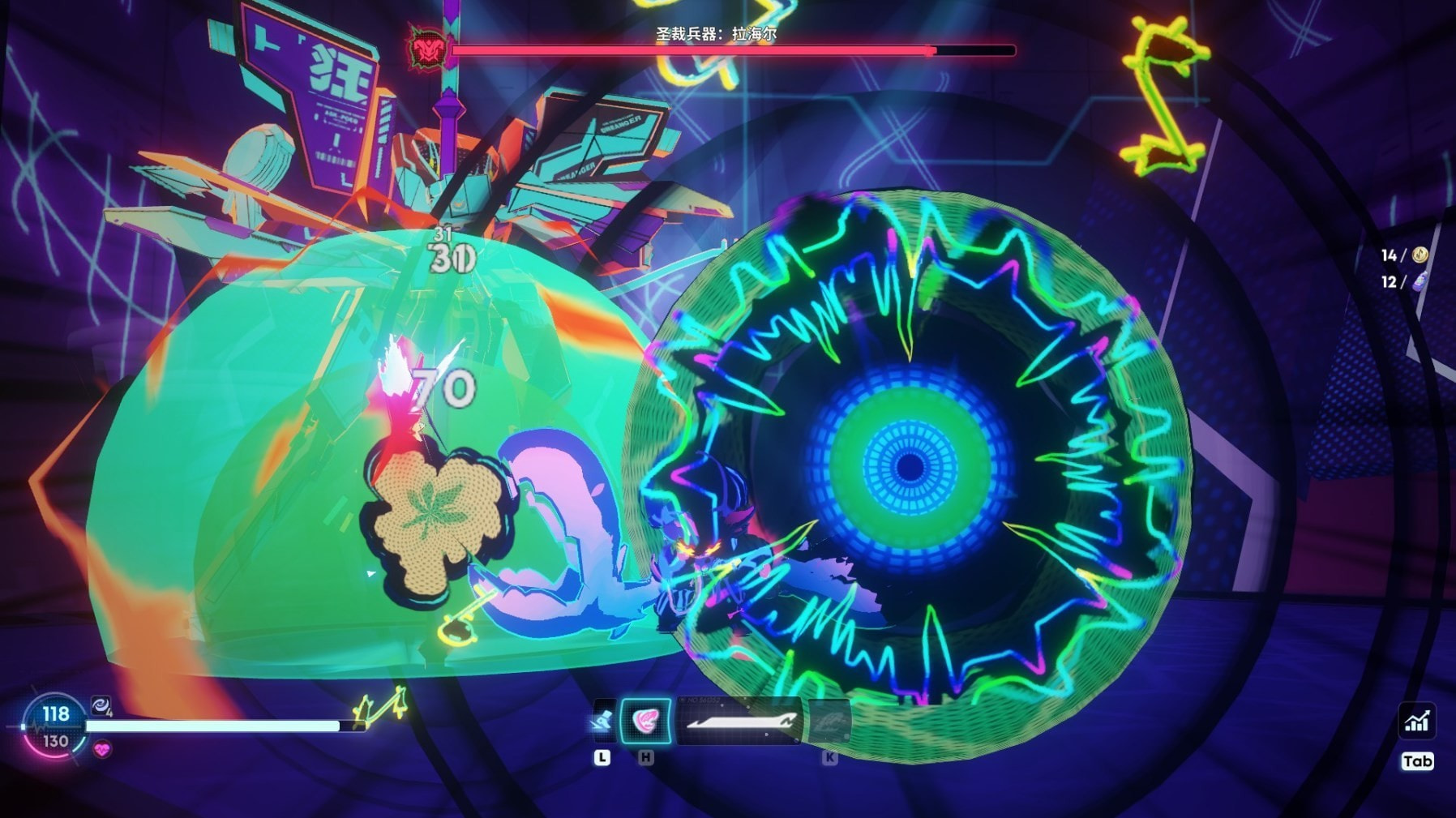
In terms of BOSS composition, the second level of this game is also a big snake with terrain damage, and the third level is also a combination of a wild man + a twin who shoots at the back row...emmm, although the specific moves and appearance are very different. , but I can only say that this design idea has a really strong sense of déjà vu.
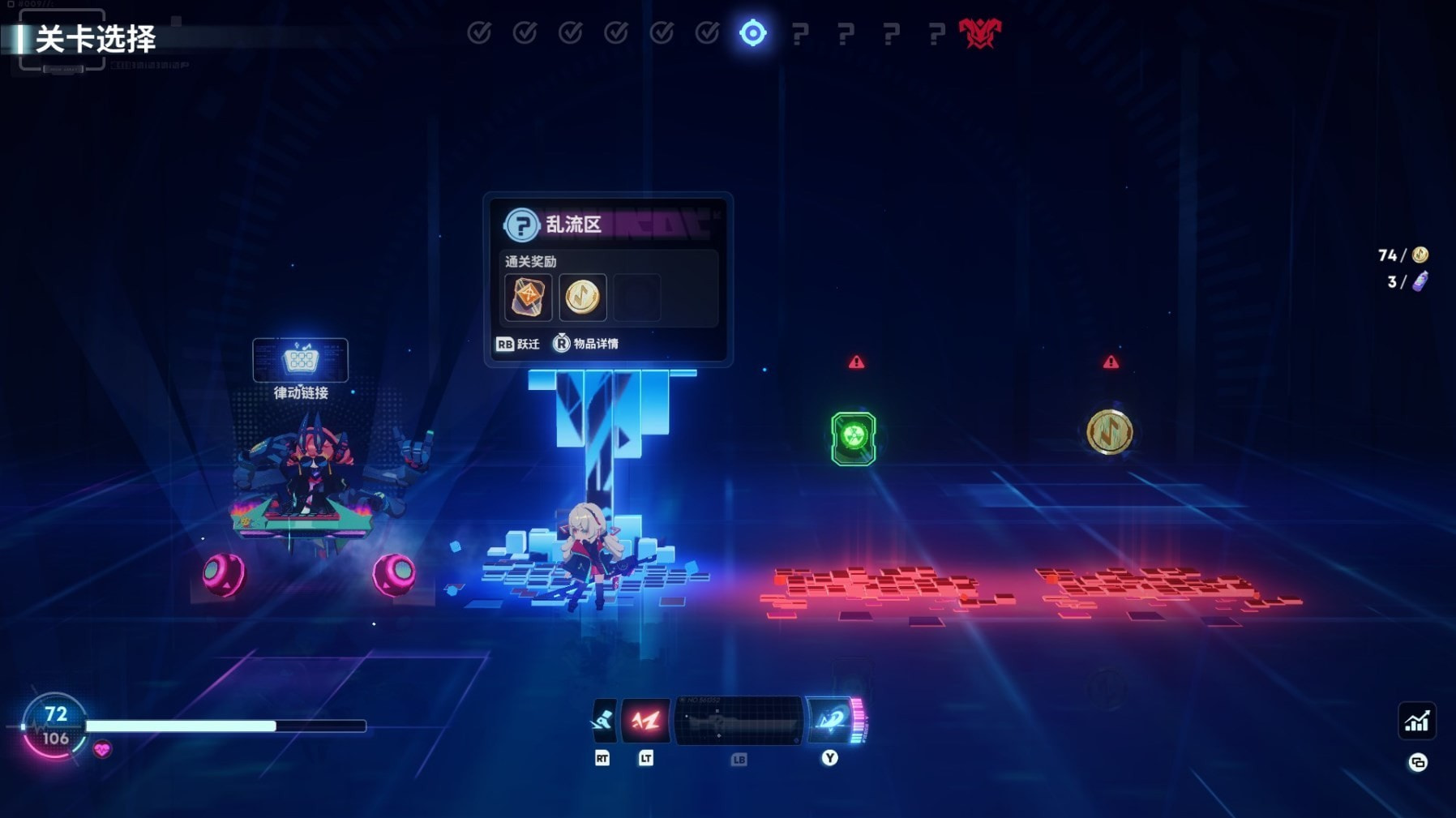
In terms of level logic, this game currently only has three major levels open (because it is in EA, it is obviously not finished yet). Each level contains 10 combat scenes (the third level is relatively small), and then After each level, players can choose the room type for the next level (just like the "Hades" mode) - sequence, rhythm core, life potion (recover half blood or increase the upper limit of 15 points), money (in-game shopping) ) or outside resources.
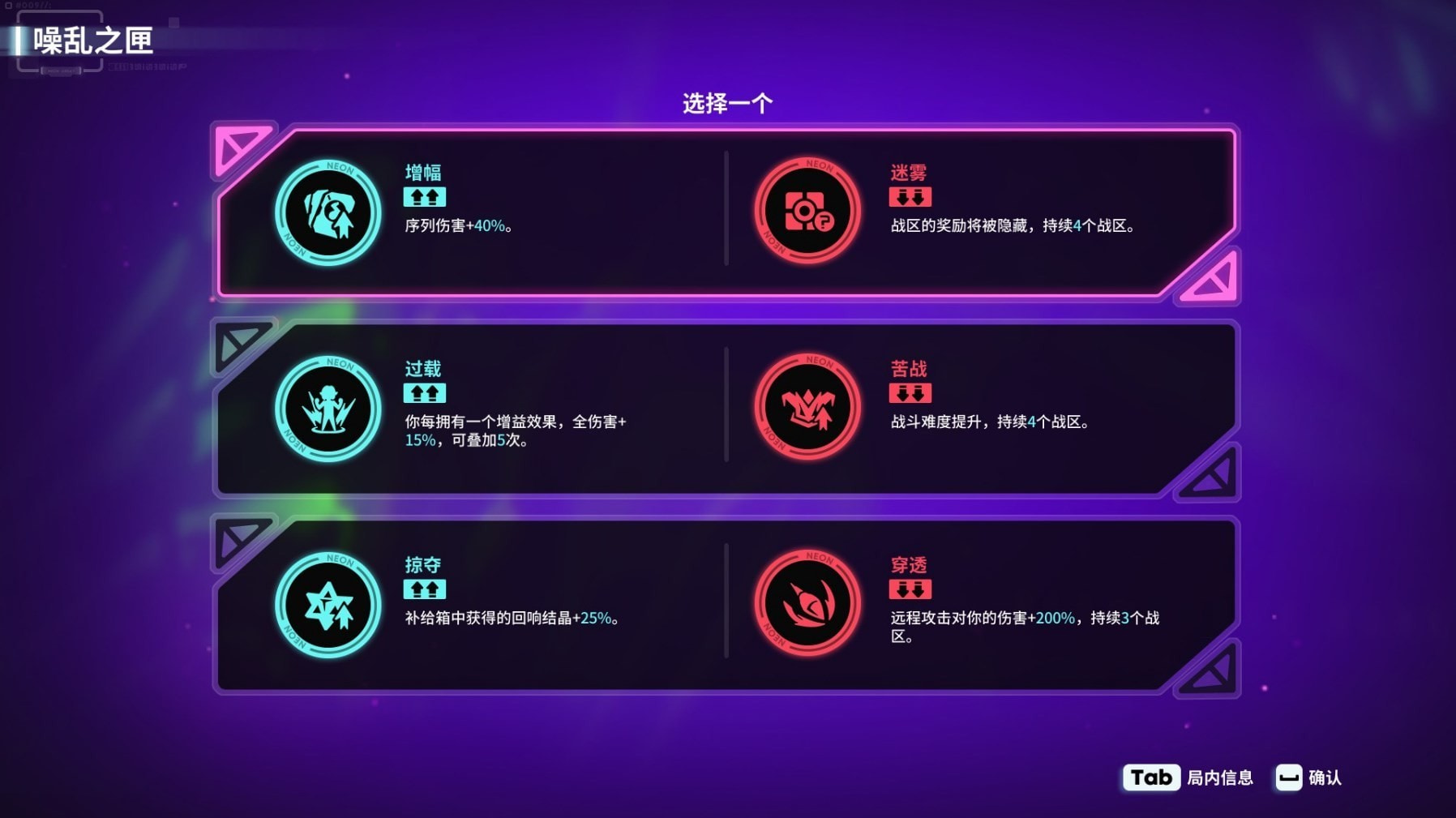
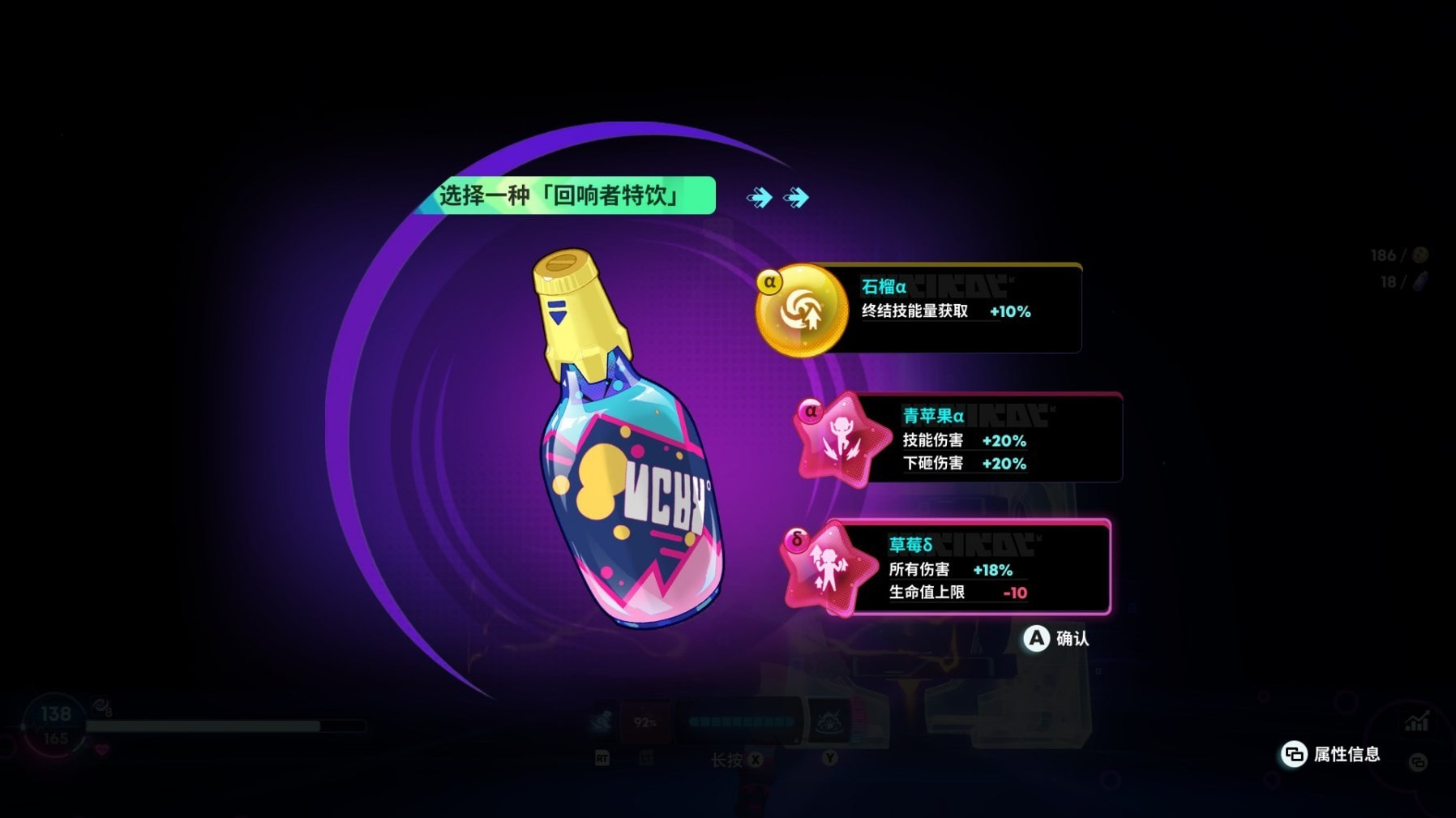
*However, this game also includes a chaos box similar to gashapon machines, positive and negative effects, and some "turbulent flow" links of process jumping, survival, and time-limited monster killing, which are relatively unique designs.

But the problem may be that there are too many external resource types in this game - plus the sequences that are the core of the combat power build include wind, fire, thunder, ice, poison, power, destruction... .God knows how difficult it is to be a "Tianhu": in comparison, "Hades" gives a lot more opportunities to get blessings, and the effects of blessings are mostly intuitive, while "Neon Sequence" may not only face a lot of problems. Resources occupy the position, and the sequence itself also has many "coordination" effects, such as the wind type turning a whirlwind into a violent wind, the thunder type turning lightning into thunder, etc. - you may not have the full "basic package", so if you encounter With such a rare high-level effect, you will face a certain degree of embarrassment whether you take it or not. The direct result is that the build is a bit too pretentious and lacks sufficient controllability.
There are too many extraneous contents crammed into the levels, but fortunately the level is not too difficult.
So why does "Neon Sequence" have so many resource rooms? The reason is that the resource requirements for outsider cultivation in this game are indeed very exaggerated.
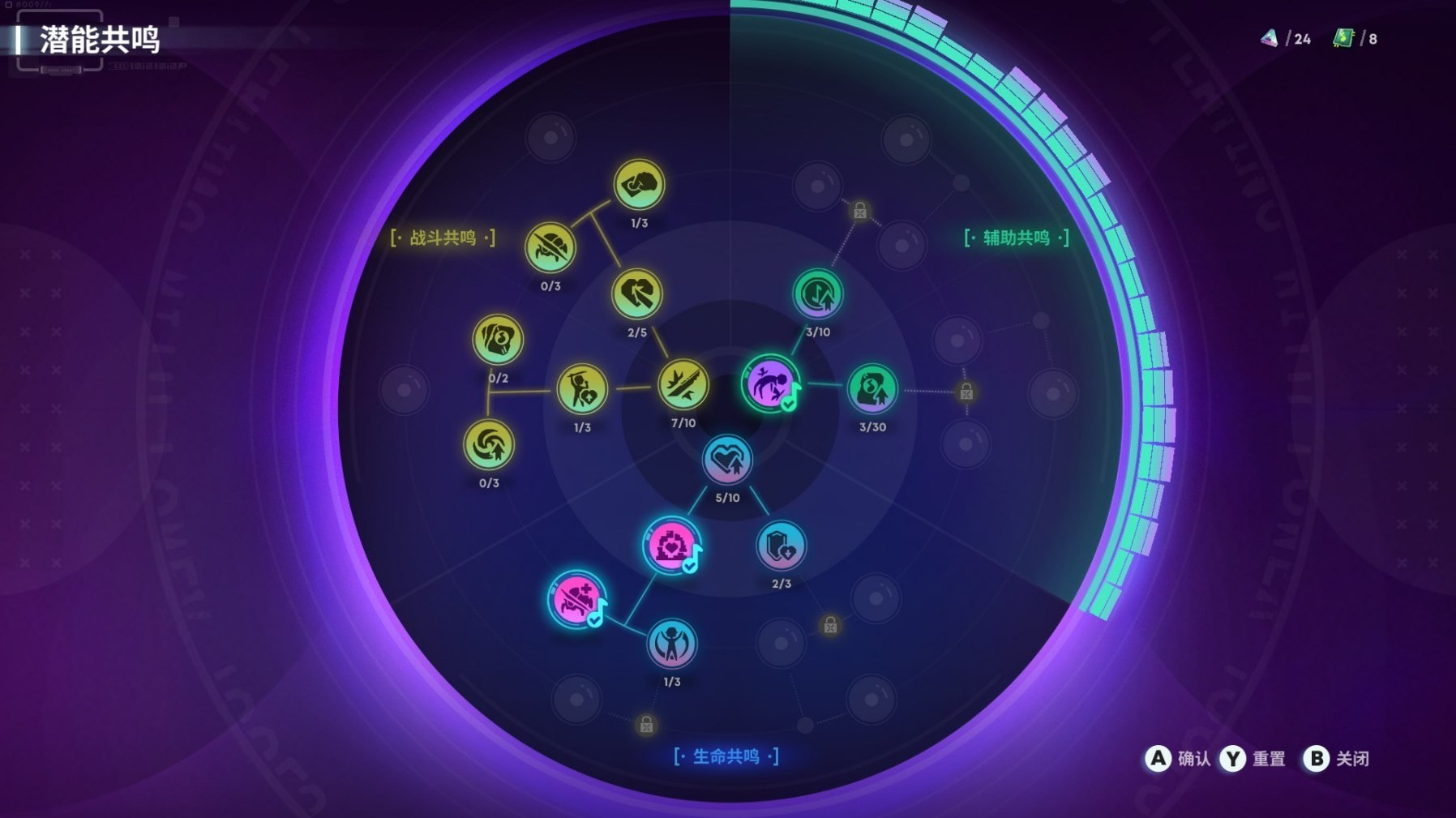
The cultivation content at home includes "Potential Resonance" - roughly equivalent to the mirror of "Hades", which is divided into three "sectors" of life, combat, and assistance. Life can increase basic blood volume and defense-related attributes ( For example, residual blood damage reduction), combat includes basic attacks and damage related to various skills, assistance is initial carrying money & sequence level, etc.; the difference is that the potential resonance of "Neon Sequence" includes some advanced unlocks Elements (that is, the outer ring), to achieve the upgrade of the outer ring, a chip is required to complete the unlocking (a large amount of content is consumed similar to a floppy disk).

In addition to "potential resonance", the most important external development content is "brand infrastructure" - including the unlocking and functional enhancement of facilities in the base and during adventures: the more important ones include the enhancement of blood recovery after BOSS and the initial acquisition sequence. Weapons (similar to the qualitative change of the Y skill in "Hades", but in "Neon Sequence", both the X basic attack and the Y skill can be qualitatively changed, and also includes some global powerful passives), Black Moon Chamber of Commerce (complete various global The exchange of resources (a discounted product will appear each time), food and beverages during battle settlement (spending money to buy temporary BUFFs for several levels) & rhythm links (explained in detail below), etc. Brand infrastructure also requires the consumption of low-level and high-level resources. ——The advanced one is obtained in every BOSS battle. This content is unlocked no faster than potential resonance, and "brand infrastructure" and "potential resonance" also fully illustrate the characteristics of this game's "noun hell".
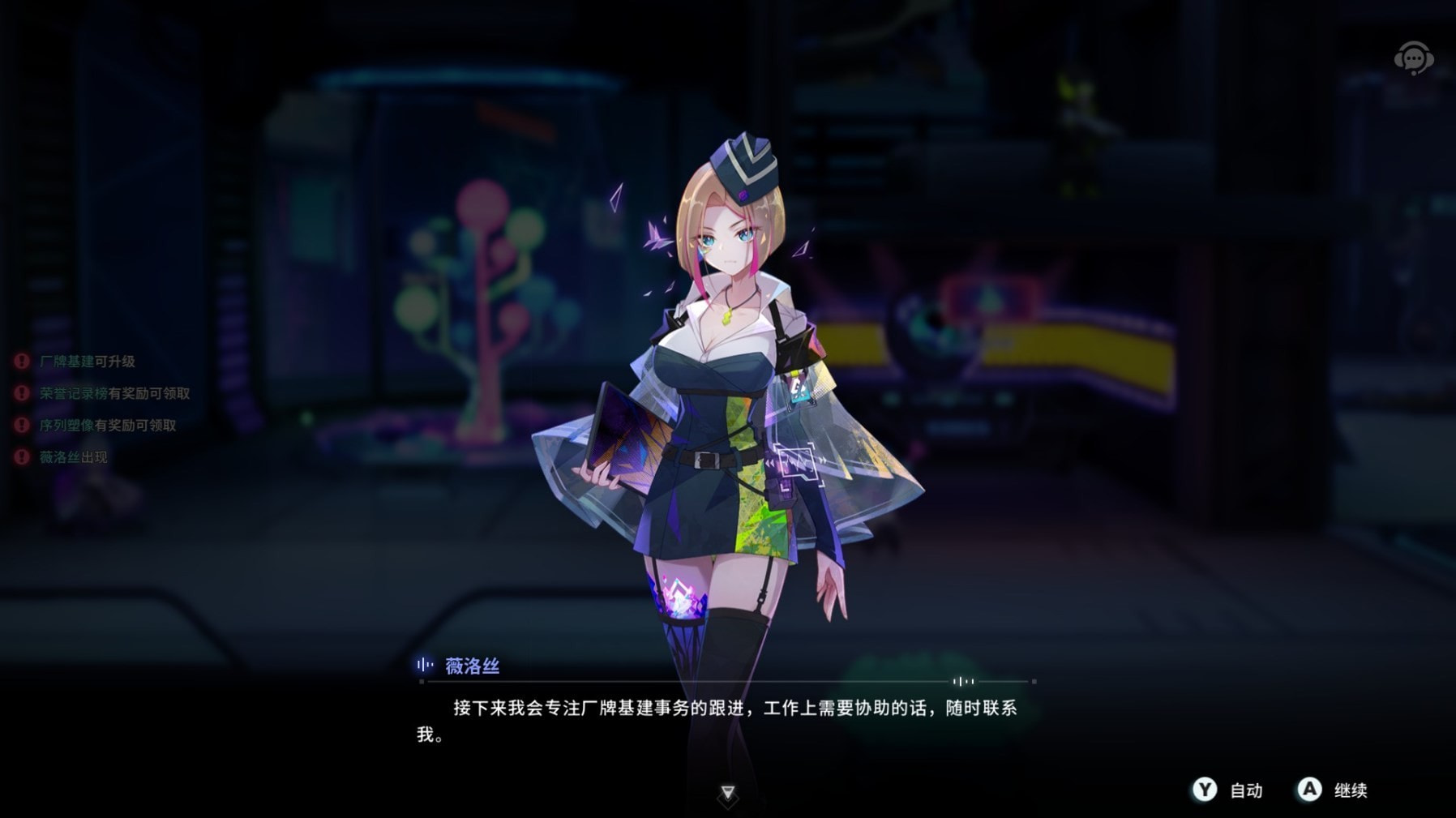
In addition to "brand infrastructure" and "potential resonance", the game also inherits the NPC relationship & gift system of "Hades" intact. Discs can be obtained during the game, and can be given to NPCs in each round, triggering friendly conversations, and receiving gifts. When the relationship with the NPC reaches levels 1, 4, and 6, the props can also complete the corresponding upgrades - each sequence The type also includes specific power-up props, which need to be brought to kill enemies to upgrade. The gift in the game is that you can equip one more after passing a level. Sequence props are useful if you get the corresponding system. You can use them in the middle of the level. Choice can be considered a controllable design to a certain extent, which I think is pretty good.